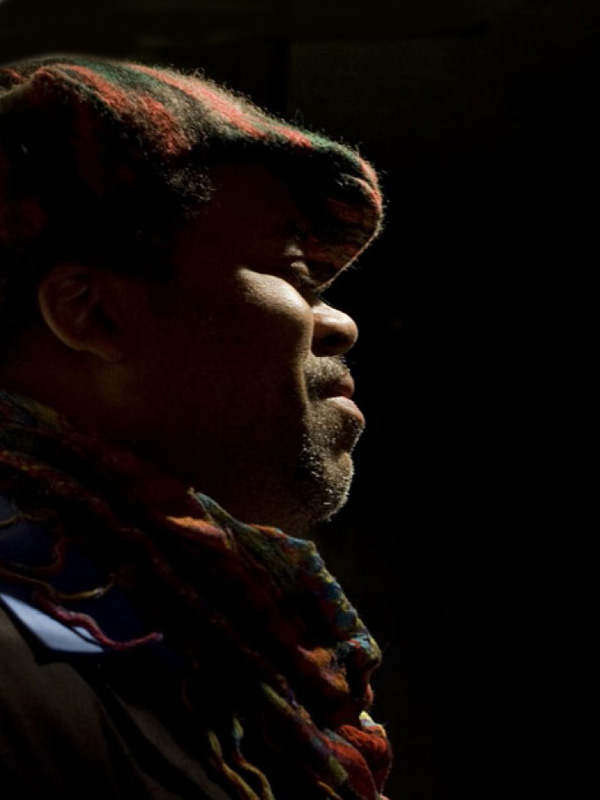The Supreme
In retrospect the ’60s seem like a time when half the population was not only in pursuit of their own private holy grail but when many felt the magic talisman firmly within their grasp—politically, pharmaceutically, and, most certainly, musically. Much has been made of the naive and dreamy reaches of the left—Panthers rehearsing Roman coups in state senate chambers, yippies trying to levitate the Pentagon—but the military-industrial right embarked on epic vision quests of their own too: the space race, the nuclear arms race, Vietnam, COINTELPRO. Strangely enough, the best music from that time now seems more concrete (less hazy, hallucinatory, hard to believe) than the counterculture’s guerrilla theater or the state’s own operatic theater of operations.
No single piece of music reveals that age more resolutely than the monument we know as John Coltrane’s A Love Supreme—a watershed that in 38 years has never needed a Ken Burns special to remind the world of its existence, unlike jazz in general. As much as any speech by King or The Autobiography of Malcolm X, A Love Supreme radiates the virtues of principled struggle, rapturous idealism, intellectual rigor, devotional passion. For all its thunder you can hear yourself think when you listen to it, primarily because Trane achieved the unthinkable: creating a secular form of God-loving music for the godless universe of Western modernity. The herculean labors involved are detailed in Ashley Kahn’s A Love Supreme, which comes nipping at the heels of his prior deep-background book on Miles Davis’s Kind of Blue.
An anything-but-God-fearing friend once quipped that when he wanted to hear God he put on Coltrane. Call it a Zen paradox: He might not have believed in a supreme being, but he had no problem believing the saxophonist talked to Him regularly. Such is the charisma of Trane’s mastery and spiritualism that even the smartass and sacrilegious can be made to “git religion,” becoming stupefied enough to spout New Age wisdom.
What can get lost in the genuflection before an African American genius like Coltrane is the contemplation and research that went into creating a holy edifice of seemingly spontaneous invention such as A Love Supreme. For Coltrane’s sake and our own, Ashley Kahn has produced a study of the album as informed and generous as his Davis book. When he describes the actual recording, he takes you back to that day in Rudy Van Gelder’s Englewood, New Jersey, studio. The informed testimony of the saxophonist’s compatriots—pianist McCoy Tyner, drummer Elvin Jones, and Van Gelder—coupled with Kahn’s own astute (and privileged) listening to the master tapes, amounts to a near surgical reconstruction of the suite’s birth. From the fanfare on, Kahn makes the tale a cliffhanger, especially for those who have already spent their adult lives hanging onto every soul-expanding note:
Elvin Jones leans to his left and, striking a Chinese gong, opens the album with an ethereal, exotic splash. “It’s the signal of something different,” remarks [Alice and John Coltrane’s son] Ravi. “You don’t hear that instrument anywhere else on any other John Coltrane recording.” … In one stroke, the hammered metal’s distinctive shimmer clears the air of standard jazz practice. … Coltrane enters with a brief fanfare. Whether blown from minarets or at military barracks, as a call to prayer or to arms, it’s a time-honored device with a timeless function …
For Trane’s widow, that call remains a renewable passport. “If you say A Love Supreme, that’s what I hear first every time,” says Alice. “It’s like a beautiful city, but we don’t enter, because we have to go through the portals … and then we reach the entranceway. When that chord hits, that E major, the doors start to open.”
Kahn also reveals a great deal about Coltrane’s communication with his group, his evolution as a thinker, his nondenominational belief system, and his daring improvisational methods. The poem-prayer Trane wrote for the original sleeve, for example, also served as a syllable-by-syllable structure for the phrasing of his solo on “Psalm,” the suite’s final movement. Kahn’s research also yields new listening materials: the long-lost recordings from the fabled sessions’ second day, which included saxophonist Archie Shepp and bassist Art Davis. The author seeks out voices other than those of jazz musicians, garnering testimonies from Patti Smith, Bono, Phil Lesh, Carlos Santana, and Ravi Shankar. Coltrane has become a metaphor for breaking on through to the other side, key to our current notions of the transcendental powers of avant-garde musics. At a time when non-Christian faith and modernity are being represented as warring camps, Kahn reminds us that, to Coltrane, no goal seemed loftier than bringing about a rapprochement.
